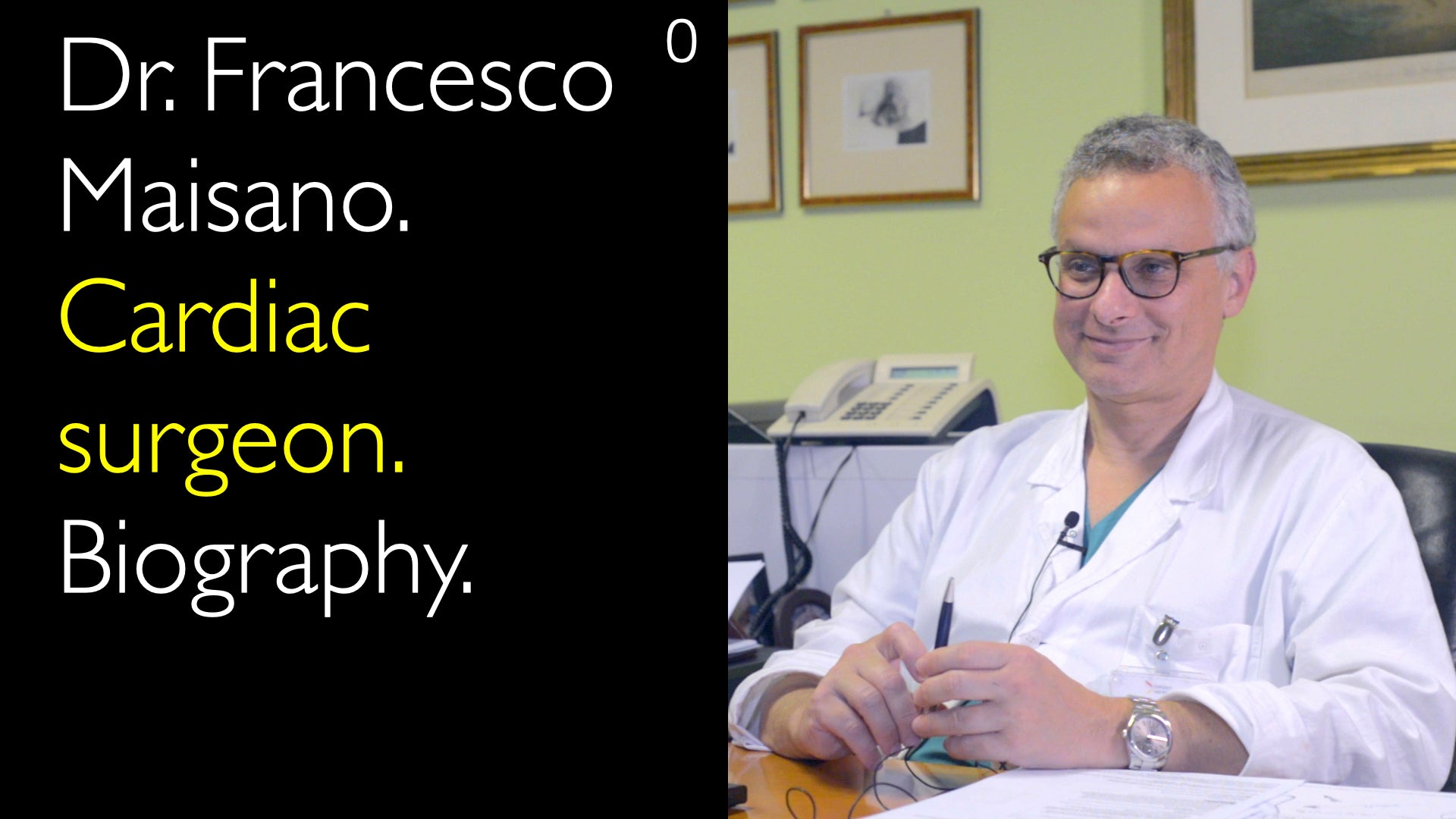하이브리드 관상동맥 재관류술 분야의 선도적 전문가인 Francesco Maisano 박사(MD)가 이 시술이 관상동맥 우회술과 스텐트 시술을 어떻게 결합하는지 설명합니다. 그는 다혈관 관상동맥질환에 대한 이 혁신적 치료법의 배경과 철학을 상세히 논의하며, 특히 LAD(좌전하행관상동맥)에 대한 유동맥 이식의 뛰어난 장기 예후를 강조합니다. 심장외과 의사와 중재적 심장내과 전문의 간의 팀 기반 접근법을 주창하는 그는, 이 하이브리드 전략이 환자의 만족도와 치료 성과를 향상시키는 데 기여한다고 말합니다.
하이브리드 관상동맥 재관류술: 최적의 심장병 치료를 위한 CABG와 PCI의 결합
섹션 바로가기
하이브리드 재관류술이란?
하이브리드 관상동맥 재관류술은 정교한 심장 시술로, 막힌 관상동맥을 치료하는 두 가지 검증된 방법을 전략적으로 결합합니다. 이 시술은 관상동맥 우회로 이식술(CABG)과 스텐트를 이용한 경피적 관상동맥 중재시술(PCI)을 포함합니다.
프란체스코 마이사노(Francesco Maisano) 박사는 이를 두 치료법의 최상의 장점을 결합한 것이라고 설명합니다. 이 접근법은 특히 다혈관 관상동맥질환 환자를 위해 설계되었으며, 심장외과의사와 중재적 심장학자가 협력하여 수행합니다.
시술의 기본 철학
핵심 철학은 각 치료법의 고유한 이점을 활용하는 데 있습니다. 프란체스코 마이사노 박사는 좌내흉동맥(LIMA)을 좌전하행지(LAD) 관상동맥에 이식하는 것이 우회로 수술에서 유일하게 입증된 예후적 이점을 제공한다고 말합니다. 이 특정 이식은 PCI 단독보다 우수한 장기 결과를 보여줍니다.
이 예후적 시술은 최소 침습적 방식으로 먼저 수행되는 경우가 많습니다. 이후 남은 관상동맥 병변은 PCI로 치료해 증상을 완화하고 삶의 질을 높입니다. PCI는 새로 이식된 LAD 이식편의 보호를 받아 위험이 낮은 중재시술이 됩니다.
현재 치료 적응증
현재 임상적 결정은 주로 관상동맥 해부학에 따라 이루어집니다. 프란체스코 마이사노 박사는 복잡한 관상동맥 해부학을 가진 경우 수술이 더 나은 선택일 수 있다고 지적합니다. PCI는 일반적으로 다혈관 질환을 동반한 당뇨병 환자에게 덜 선호됩니다.
반면, 해부학적 상태와 관계없이 수술 위험이 매우 높은 환자에게는 PCI가 선호될 수 있습니다. 마이사노 박사가 안톤 티토프(Anton Titov) 박사와 논의한 바와 같이, 이론적으로 하이브리드 재관류술은 관상동맥 중재가 필요한 모든 환자에게 선택지가 될 수 있습니다. 다만 이를 표준 치료로 확립하려면 대규모 임상 시험이 필요합니다.
환자 이점과 수용도
하이브리드 접근법의 중요한 장점은 환자의 치료 수용도가 높아진다는 것입니다. 프란체스코 마이사노 박사는 PCI와 전통적 개심술 간의 환자 경험 차이를 강조합니다. PCI는 종종 당일 치료 및 퇴원이 가능합니다.
전통적 CABG 수술은 흉골 절개와 최대 3개월의 회복 기간이 필요합니다. 하이브리드 전략은 완전한 수술의 높은 초기 위험과 긴 회복 기간을 완화하는 것을 목표로 합니다. 기술을 혼합함으로써 수술적 재관류의 우수한 장기적 이점을 더 수용 가능한 방식으로 제공합니다.
심장팀 치료의 미래
하이브리드 재관류술의 성공적 구현은 원활한 협력에 달려 있습니다. 프란체스코 마이사노 박사는 심장외과의사와 중재적 심장학자 간의 상호작용 증대가 필요함을 강조합니다. 그는 심장팀이 발전함에 따라 이 시술이 더 흔한 선택이 될 것이라고 예측합니다.
현재 마이사노 박사는 이 기술을 환자 치료에 통합하고 있습니다. 그는 최소 침습적 관상동맥 치료에 집중하는 고도로 전문화된 팀을 이끌며, 이 팀 기반 모델은 복잡한 관상동맥질환 관리의 미래를 대표해 환자에게 맞춤형 최첨단 치료를 제공합니다.
전체 대화록
안톤 티토프(Anton Titov) 박사: 하이브리드 관상동맥 재관류술은 관상동맥 우회로 이식술과 경피적 관상동맥 스텐트 시술을 결합합니다. 이는 다혈관 관상동맥질환 치료를 위한 정교한 시술인데, 귀하의 진료에서 하이브리드 관상동맥 재관류술의 적응증은 무엇입니까?
프란체스코 마이사노(Francesco Maisano) 박사: 매우 흥미로운 질문입니다. 몇 년 전 안토니오 콜롬보(Antonio Colombo) 박사와 함께 논설을 쓴 적이 있는데, 우리는 이 하이브리드 관상동맥 재관류술을 더 많이 시행해야 한다고 확신합니다.
주요 문제는 사용 가능한 데이터가 표준을 세우기에는 아직 부족하다는 점입니다. 우리는 증거보다 철학에 더 의존하고 있습니다. 그 철학은 이렇습니다: 관상동맥 우회로 이식술에서 유일하게 입증된 예후적 이점은 유방동맥을 LAD 관상동맥에 이식하는 것입니다. 다른 모든 것은 예후적 영향이 적습니다.
우리는 유방동맥 LAD 이식을 매우 최소 침습적인 방식으로 수행할 수 있습니다. 이 이식은 PCI보다 우수한 것으로 나타났습니다. 따라서 이 예후적 시술을 먼저 수행한 후 나머지 모든 관상동맥 병변을 PCI로 치료하면 두 세계의 최상의 장점을 결합하는 셈입니다.
우리는 우회로 이식으로 예후를 개선하고, PCI로 증상과 삶의 질을 향상시킵니다. PCI는 첫 번째 이식편의 보호를 받아 낮은 위험의 시술이 됩니다.
그렇다면 하이브리드 관상동맥 재관류술의 적응증은 무엇일까요? 기본적으로 이론적으로는 중재가 필요한 모든 관상동맥질환 환자일 수 있습니다. 다만 이는 아직 충분한 임상 시험으로 입증되지 않았습니다.
그러나 원칙적으로 이는 CABG 수술의 수용도를 높이기 위한 모두를 위한 해결책이 될 수 있습니다. 현재 관상동맥질환 중재 시나리오를 보면 두 가지 선택지가 있기 때문입니다.
한 선택지는 병원에 와서 하루 안에 해결책을 얻고 치료된 관상동맥으로 걸어 나가는 것입니다. 다른 선택지는 수술실에 가서 가슴을 열고 완전히 일상으로 돌아가기까지 3개월이 걸리는 것입니다.
분명히, 아마도 저를 포함한 대부분의 사람들은 더 쉬운 해결책을 선택하려 할 것입니다. 물론 장기적으로는 CABG 수술이 훨씬 낫다는 것을 알고 있지만, 저는 항상 장기적 목표에 도달하려면 단기적 접근이 필요하다고 생각합니다.
따라서 시간이 지남에 따른 수술의 사망률과 이환율 위험은 PCI의 위험에 의해 완화됩니다. 하지만 여전히 초기 위험은 수술이 PCI보다 높습니다.
그래서 오늘날 우리는 관상동맥의 해부학을 바탕으로 결정을 내립니다. 복잡한 관상동맥 해부학을 가진 경우 수술로 더 잘 치료될 수 있다는 것을 알고 있습니다. PCI는 당뇨병 환자에게 덜 선호되는 선택입니다. 반대로 환자가 매우 고위험인 경우 해부학적 상태와 관계없이 PCI를 선호합니다.
우리는 이런 종류의 규칙을 따릅니다. 하지만 앞으로 나아간다면, 저는 이 분야에서도 심장외과의사와 중재적 심장학자 간의 상호작용이 더 많아지면 하이브리드 관상동맥 재관류술이 점점 더 선택지가 될 것이라고 예측합니다.
실제로 이것은 곧 이루어질 것입니다. 저는 여기 심장판막 센터 리더로서 새로운 직위에 있습니다. 저는 환자 치료를 위해 다양한 기술을 통합하는 것을 좋아합니다.
오늘날 저는 심장판막에 집중하지만, 관상동맥 분야에서도 많은 경험을 쌓았습니다. 지난 몇 년 동안 많은 관상동맥 수술을 수행했고, 오늘날에도 필요하다면 그렇게 할 수 있습니다.
저는 그것을 합리적으로 잘 한다고 생각합니다. 하지만 저는 제 지도 아래 최소 침습적 관상동맥 치료를 수행하는 고도로 전문화된 팀을 갖는 것을 선호합니다. 우리는 많은 환자에게 하이브리드 관상동맥 재관류술 시술을 도입하고 있는데, 저는 정말로 이것이 미래의 방향이라고 믿기 때문입니다.





